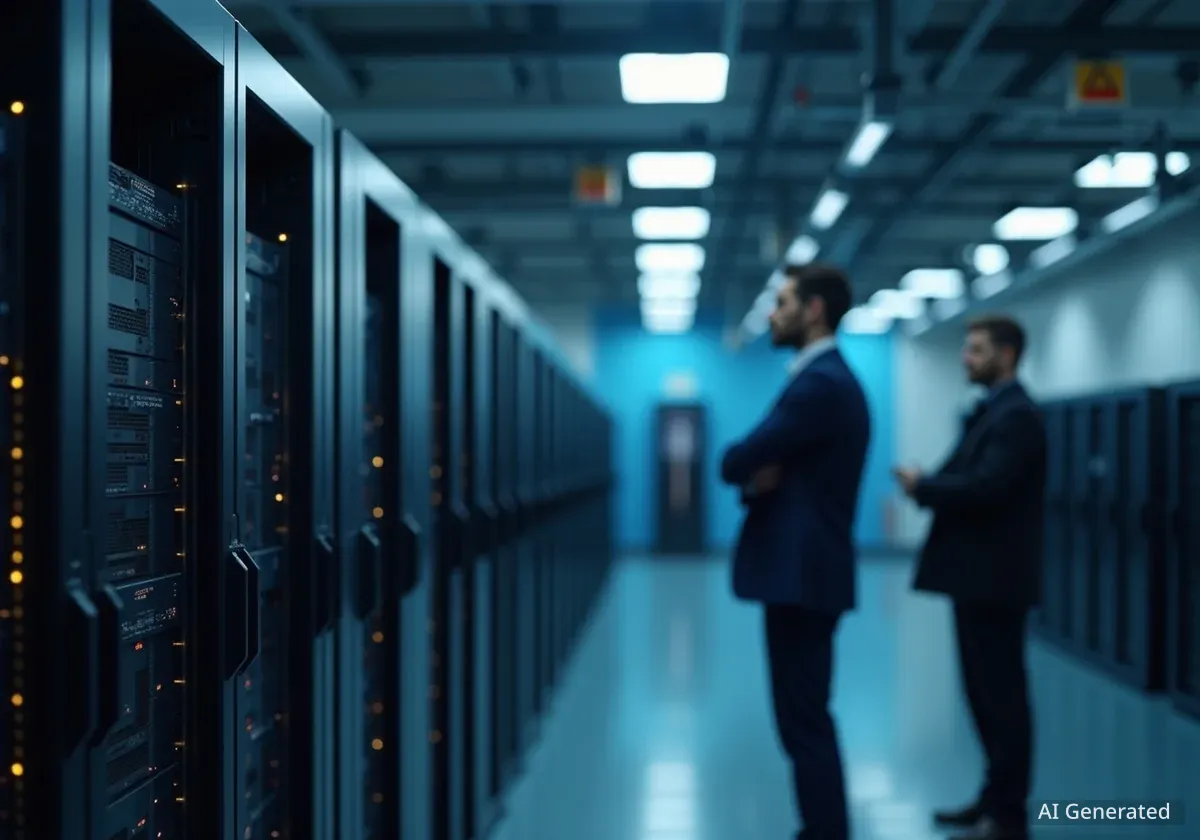Researchers have developed a new artificial intelligence model, DeepSeek-R1, that learns complex reasoning abilities through a trial-and-error process known as reinforcement learning. This method allows the AI to develop advanced problem-solving strategies, such as self-correction and exploring alternative solutions, without relying on human-annotated examples of thought processes.
Key Takeaways
- DeepSeek-R1 is a new AI model trained using reinforcement learning (RL) to enhance its reasoning capabilities.
- The model was rewarded based only on the final answer's correctness, allowing it to discover its own problem-solving methods.
- It spontaneously developed sophisticated behaviors like self-verification and reflection during training.
- DeepSeek-R1 shows superior performance in verifiable tasks like mathematics and coding competitions, surpassing some human benchmarks.
- Despite its strengths, the model has limitations, including token inefficiency and sensitivity to user prompts.
A New Approach to AI Reasoning
General reasoning has long been a significant challenge in the field of artificial intelligence. While large language models (LLMs) have shown impressive capabilities, their success often depends on extensive training data that includes human-provided examples of step-by-step thinking, known as chain-of-thought (CoT) prompting.
A new study introduces a different method. Researchers trained an AI model using pure reinforcement learning (RL), a technique that incentivizes the model with rewards for correct outcomes. This approach moves away from the need for human-labeled reasoning paths, potentially allowing the AI to explore more effective, non-human-like ways of solving problems.
What is Reinforcement Learning?
Reinforcement learning is a type of machine learning where an AI agent learns to make decisions by performing actions in an environment to achieve the maximum cumulative reward. In this case, the AI model is rewarded for generating the correct final answer to a problem, encouraging it to refine its internal reasoning process over time through trial and error.
The Emergence of DeepSeek-R1-Zero
The initial model, named DeepSeek-R1-Zero, was built on the DeepSeek-V3 Base architecture. Researchers used a reinforcement learning algorithm called Group Relative Policy Optimization (GRPO) to train it. The model was only given a reward signal based on the accuracy of its final answers, with no guidance on how to arrive at them.
During its training, DeepSeek-R1-Zero began to exhibit self-evolutionary behavior. The model's responses grew longer as it learned to spend more "thinking time" on complex problems. This extended process allowed it to develop advanced strategies such as reflection, self-verification, and the systematic exploration of different solutions.
Performance Breakthrough
Throughout its RL training, DeepSeek-R1-Zero's performance on the American Invitational Mathematics Examination (AIME) 2024 benchmark increased dramatically, jumping from an initial score of 15.6% to 77.9%. This score significantly surpasses the average performance of human competitors in the AIME.
An 'Aha Moment' in AI Training
Researchers observed a distinct shift in the model's reasoning patterns during training, which they described as an "aha moment." The model's use of reflective terms like "wait," "mistake," and "verify" increased sharply at a certain point, indicating a new level of self-monitoring and error correction.
"Rather than explicitly teaching the model how to solve a problem, we simply provide it with the right incentives and it autonomously develops advanced problem-solving strategies," the researchers noted in their paper published in Nature.
Refining the Model into DeepSeek-R1
While DeepSeek-R1-Zero demonstrated powerful reasoning, it had practical issues. Its outputs could be difficult to read, and it sometimes mixed English and Chinese in a single response. To address these challenges, the team developed the final version, DeepSeek-R1, through a multi-stage training process.
This pipeline included:
- Rejection Sampling: Filtering for high-quality, human-aligned conversational responses.
- Supervised Fine-Tuning (SFT): Training the model on both reasoning and non-reasoning datasets to improve general capabilities like writing.
- Secondary RL Stage: A final round of reinforcement learning to enhance helpfulness and harmlessness while further refining reasoning.
This comprehensive approach allowed DeepSeek-R1 to inherit the strong reasoning of its predecessor while becoming better aligned with human preferences and communication styles. The final model showed significant improvements in general instruction-following and user-preference benchmarks, with its score on AlpacaEval 2.0 improving by 25%.
Capabilities and Current Limitations
DeepSeek-R1 excels in verifiable domains such as mathematics, coding, and STEM subjects. However, the researchers acknowledge several areas for improvement.
Identified Weaknesses
The model currently has suboptimal performance in generating structured outputs and cannot use external tools like calculators or search engines. It also exhibits token inefficiency, sometimes "overthinking" simple questions by generating excessively long reasoning processes. Additionally, when prompted in languages other than English or Chinese, it may default to English for its reasoning.
The study also notes that the model is sensitive to prompts and performs best with a direct, zero-shot approach rather than few-shot examples. Improvements in software-engineering tasks were limited because the long evaluation times for these tasks made large-scale RL training inefficient.
Ethical Considerations and Future Directions
The developers of DeepSeek-R1 recognize the potential ethical risks associated with highly capable reasoning models. An AI that can devise more feasible and executable plans could be misused if subjected to jailbreak attacks. The safety level of DeepSeek-R1 is considered comparable to other state-of-the-art models like GPT-4o, and its safety can be enhanced when paired with a dedicated risk control system.
Future work will focus on overcoming the model's current limitations, such as integrating tool use and improving token efficiency. A key challenge remains in developing reliable reward models for subjective tasks like writing, where correctness is not easily verifiable. The researchers suggest that the key to unlocking further potential lies in providing hard problems, a reliable verifier, and sufficient computational resources for AI to continue learning on its own.





